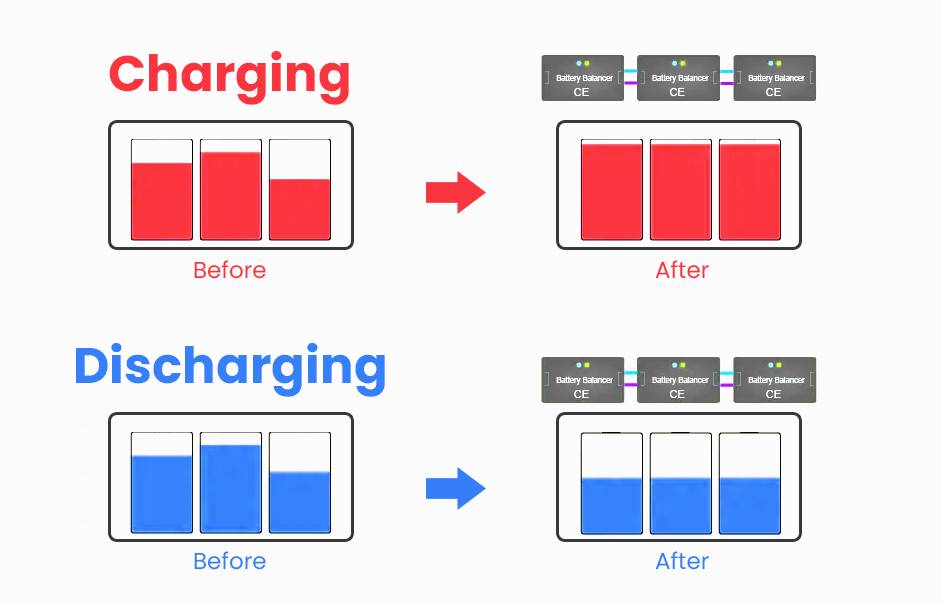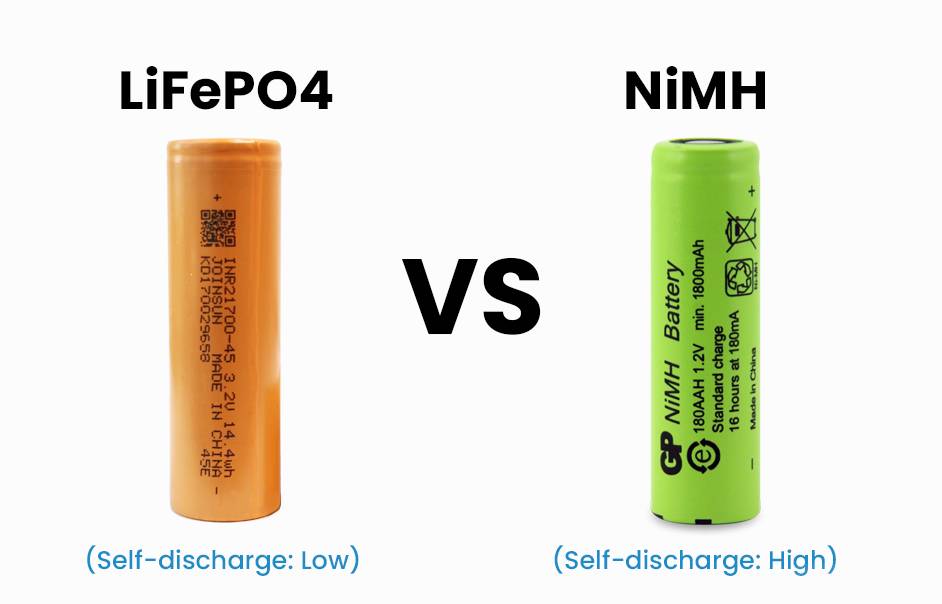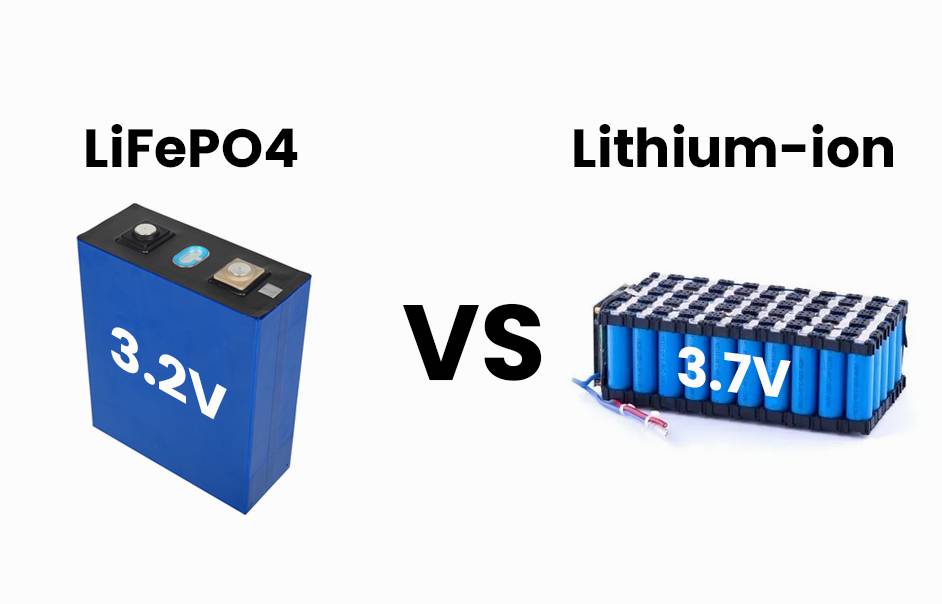Welcome to our blog, where we explore the realm of uninterrupted power supply (UPS) batteries and delve into LiFePO4 technology. If you’re curious about replacing your UPS battery with a LiFePO4 battery, you’re in the right place! In this article, we’ll provide insights into these battery types to help you make an informed decision, boosting the efficiency and reliability of your power backup system. Let’s embark on this electrifying journey together!
Understanding UPS Batteries and Their Importance
The significance of UPS batteries, short for uninterrupted power supply batteries, cannot be overstated in safeguarding devices and systems from unforeseen power interruptions. Acting as silent heroes behind the scenes, these batteries serve as backup power sources, ensuring continuous operation during unexpected outages or fluctuations in the main electricity supply.
- Critical Backup Power: UPS batteries play a pivotal role in preventing data loss and potential damage to sensitive electronics during sudden power blackouts. They seamlessly switch to battery power, allowing users to save their work and safely shut down equipment until normal power is restored.
- Protection Against Voltage Fluctuations: Addressing concerns related to voltage fluctuations, UPS batteries provide stable and reliable backup power. This safeguards hardware from malfunctions or permanent damage caused by unexpected drops or spikes in voltage levels.
- Essential for Continuous Operation: UPS batteries are indispensable in industries where uninterrupted operation is paramount, such as hospitals, manufacturing plants, and financial institutions. In these sectors, even brief interruptions can have severe consequences, making a robust backup system a non-negotiable requirement.
Understanding the importance of UPS batteries extends beyond maintaining productivity; it involves recognizing their contribution to overall peace of mind. Knowing that you are prepared for any eventuality underscores the crucial role these batteries play in ensuring continuous and reliable power supply.
Introducing LiFePO4 Batteries
Enter LiFePO4 batteries – a modern alternative to traditional power sources. These lithium iron phosphate batteries bring numerous benefits and technological advancements to the realm of electronic devices.
- Higher Energy Density: LiFePO4 batteries excel in storing more energy within a compact size, making them ideal for devices with limited space. Their higher energy density sets them apart from traditional lead-acid or gel-cell batteries.
- Extended Lifespan: Unlike conventional battery types, LiFePO4 batteries boast a longer lifespan. With proper care, they can endure for up to 10 years or more, providing a reliable and long-lasting power solution.
- Consistent High-Performance: LiFePO4 batteries deliver consistent performance even under high discharge rates. This feature makes them suitable for applications requiring a stable and efficient power supply.
- Environmentally Friendly: In contrast to lead-acid batteries that contain hazardous materials, LiFePO4 batteries are non-toxic and environmentally friendly. They also exhibit a lower self-discharge rate when not in use.
Conclusion: LiFePO4 batteries offer an exciting alternative for UPS systems, providing superior characteristics like higher energy density, extended lifespan, and reliable performance under high discharge rates. However, considerations such as compatibility and initial investment costs should be weighed before fully adopting this technology into your setup. As technology advances, the potential benefits of LiFePO4 batteries may become increasingly accessible and compelling for various applications.
Pros and Cons of Replacing UPS Battery with LiFePO4
Pros and Cons of Replacing UPS Battery with LiFePO4:
Pros:
- Longer Lifespan: LiFePO4 batteries offer a longer lifespan, lasting up to 10 years. This results in fewer replacement costs over time compared to traditional UPS batteries.
- Higher Energy Density: With a higher energy density, LiFePO4 batteries can store more power in a smaller size. This compact design is advantageous for installations with limited space.
- Quick Charging: LiFePO4 batteries are known for their quick charging capabilities, reaching full charge much faster than traditional UPS batteries. This minimizes downtime during power outages.
Cons:
- Higher Upfront Cost: The upfront cost of LiFePO4 batteries is generally higher than traditional options. Despite potential long-term savings, the initial investment may be a consideration.
- Compatibility Issues: Replacing an existing UPS battery with LiFePO4 may pose compatibility challenges. Ensure that your UPS system supports this battery type before making the switch.
While LiFePO4 batteries offer compelling advantages such as a longer lifespan, higher energy density, and quick charging, it’s essential to weigh these benefits against the higher upfront cost and potential compatibility issues. Careful evaluation and planning are crucial before deciding to replace your UPS battery with LiFePO4.
How to Replace Your UPS Battery with LiFePO4
Replacing your UPS battery with a LiFePO4 battery is a straightforward process that can significantly improve your backup power system’s performance and lifespan. Here’s a step-by-step guide for the replacement:
- Determine Compatibility: Before starting, ensure your UPS supports LiFePO4 batteries. Check your UPS model’s specifications to confirm compatibility.
- Purchase the Right Battery: Buy a high-quality LiFePO4 battery from a reputable supplier, matching the voltage and capacity requirements of your UPS.
- Disconnect Power Supply: Safely disconnect all power sources connected to your UPS to avoid electrical hazards during the replacement.
- Remove Old Battery: Open the UPS unit, locate the old lead-acid or AGM battery, and disconnect connectors. Carefully remove the old battery.
- Install New LiFePO4 Battery: Place the new LiFePO4 battery securely in the same location. Connect wires according to polarity markings (positive/negative).
- Test Functionality: Close the UPS unit, reconnect all power sources, and test functionality to ensure the new battery is working correctly.
Remember, always follow manufacturer guidelines for electrical equipment maintenance for the best results. This simple replacement process can bring enhanced performance and longevity to your UPS system.
Tips for Proper Maintenance and Care of LiFePO4 Batteries
Tips for Proper Maintenance and Care of LiFePO4 Batteries:
- Regular Inspections: Periodically inspect LiFePO4 batteries for signs of damage, such as cracks or leaks. Ensure all connections are secure to maintain optimal performance.
- Keep Them Clean: Clean the exterior of the batteries with a soft cloth or brush to remove dirt and debris. Avoid getting water or cleaning solution inside the batteries.
- Temperature Control: Protect LiFePO4 batteries from extreme temperatures, as they can impact lifespan. Store them in a cool, dry place away from direct sunlight to maintain optimal performance.
- Proper Charging: Use a charger specifically designed for LiFePO4 batteries and follow the manufacturer’s instructions carefully. Adhering to specific charging parameters is crucial for longevity and performance.
- Avoid Overdischarging: Prevent irreversible damage by avoiding overdischarging. Be mindful of power usage and try to avoid draining the battery completely whenever possible.
- Safe Storage: When storing LiFePO4 batteries for an extended period, ensure they are at approximately 50% charge before disconnecting from devices or chargers. This prevents self-discharge and overcharging during storage.
By following these maintenance tips, you can maximize the efficiency and longevity of your LiFePO4 batteries, ensuring reliable performance when needed.
Safety Considerations when Replacing UPS Battery with LiFePO4
Safety Considerations when Replacing UPS Battery with LiFePO4:
- Research and Consultation: Thoroughly research LiFePO4 batteries and consult professionals before making changes to your UPS system. Expert insights can guide you through the process safely.
- Proper Installation: Follow manufacturer guidelines for correct LiFePO4 battery installation. Improper installation can lead to damage or hazardous situations.
- Voltage Compatibility: Ensure the LiFePO4 battery voltage aligns with your UPS system’s requirements to prevent malfunctions or accidents.
- Ventilation: Provide adequate ventilation around the LiFePO4 battery to prevent overheating, as it generates heat during charging and discharging.
- Protection Circuitry: Choose a LiFePO4 battery with built-in protection circuitry against overcharging, over-discharging, short circuits, and excessive temperatures for enhanced safety.
- Handling Precautions: Wear appropriate protective gear such as gloves and goggles when handling LiFePO4 batteries to guard against spills or leaks.
- Disposal Guidelines: Adhere to local regulations for responsible disposal of old UPS batteries or damaged/defective LiFePO4 batteries.
Remember, this information provides general guidance, and professional advice tailored to your specific situation is essential for a safe and successful replacement process.













